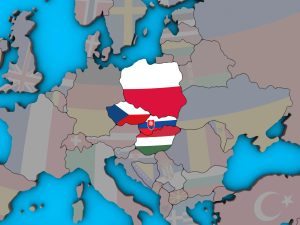Shifting sands in the geopolitical calculus of both Asia and Europe are impacting global order. With the Trump administration enacting new trade barriers, including against India and the European Union (EU), prudent thinking is essential.
India’s increasing prominence as a political and economic heavyweight is evident – for 2024-25, gross domestic product growth is expected to be between 6.5 percent and 7 percent. The World Bank’s India Development Update underscored this trajectory, forecasting that India could become the world’s third-largest economy by 2027, overtaking Japan and consolidating its position as the fastest-growing major economy.
For its part, amid growing concerns about China’s coercive trade practices via the Belt and Road Initiative (BRI) and Russia’s revisionist geopolitics, Brussels is actively seeking trusted partners in Asia. In this landscape, India is increasingly viewed as a credible, like-minded alternative, as evidenced by the recent historic visit to the country by Ursula von der Leyen, the president of the European Commission, accompanied by the entire College of Commissioners.
India is making efforts to bolster regional integration in partnership with the EU via connectivity initiatives like India-Middle East-Europe Economic Corridor. New Delhi has also recently signed free trade agreements with the UAE and the European Free Trade Association countries, and is pushing for a speedy FTA conclusion with the EU. India is also actively working on strengthening its domestic manufacturing base to ease supply chains are critical points.
A recent policy paper published by the Central European Institute of Asian Studies argued that Europe at large and in particular the Visegrad Four (V4) countries – Czechia, Hungary, Poland, and Slovakia – need to deepen their engagement with India.
India’s engagement with the Central European countries has historically been weak, but in recent years the Modi government has actively sought to correct this imbalance. Having said that, India’s neutral position on Russia’s invasion of Ukraine remains a bone of contention for the West.
India’s interest in building up ties with the V4 stems from both economic and geopolitical concerns. Beijing’s strategic outreach into Europe, particularly through the China-CEE Cooperation format launched in 2012 and the BRI since 2013, has served to secure its broader regional interests. For India to counter China’s presence, it is imperative to cultivate a dedicated V4 forum with a broader strategy to gain meaningful entry points and influence within Europe and the EU.
With the V4 countries having established expertise in automobiles, electronics, heavy machinery, and advanced manufacturing, India stands to benefit by aligning ties with its own industrial ambitions, such as the “Make in India” initiative. The resurgence of protectionism and the threat of escalating trade wars, particularly under the second Trump administration, pose a risk to existing trade patterns. Against this backdrop, India must prioritize the strengthening of its manufacturing sector to sustain export-driven growth. Collaboration with the V4, known for its industrial precision and integration into European value chains, can help India bridge technology gaps and accelerate domestic production capacity.
However, for this to happen, India needs to do its homework. Reducing tariff and non-tariff trade barriers and improving protections for foreign investors are going to be key. The first issue would be largely solved by concluding the EU-India FTA that is already in negotiations. An investment agreement, aimed at facilitating and protecting European investment in India and vice versa, is going to be a more difficult nut to crack.
The public perception of India by Central Europeans is also a critical bottleneck. Opinion polls indicate limited awareness and ambivalence toward India among the V4 general public, especially among the youth, even if political and business elites show interest in cooperation. Investing more in publicity campaigns, especially those that present India as a modern partner ripe for economic cooperation in key sectors, will be crucial for India to sway public opinion in favor of deepened partnership.
India’s emergence as a trusted development partner – especially among the Least Developed Countries, Small Island Developing States, and Pacific Island Countries – has enhanced its reputation across the Global South and gained significant attention from the Global North. Its ability to deliver low-cost, high-impact development solutions offers strategic opportunities for cooperation with the V4. Joint development programs can enable targeted initiatives in infrastructure, health, agriculture, and digital transformation. Such collaboration would allow the V4 states to expand their presence in the Indo-Pacific region, which is increasingly shaped by the China-U.S. rivalry, while India could benefit from enhanced European support for its Indo-Pacific vision.





























